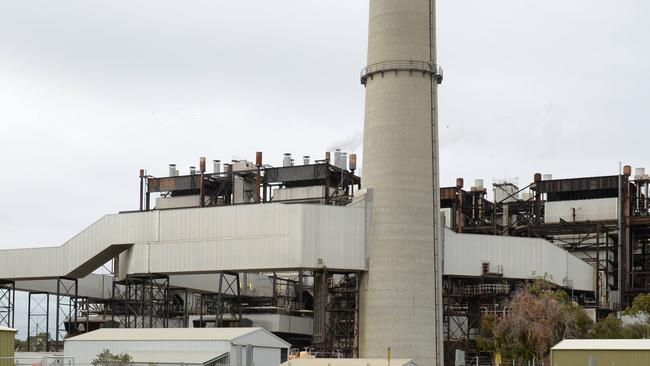SA electricity crisis: AEMO warns of new danger for forced blackouts in SA as repairs get under way
CALLS for a scheme that puts a price on carbon in the energy sector are coming from a range of unlikely industry players, including the government body that sets the national grid rules.

SA News
Don't miss out on the headlines from SA News. Followed categories will be added to My News.
- Largest power station at ‘end of life’
- Jay’s top advisers in push to buy power station, likely Pelican Point
- New 100-megawatt wind farm approved
- How does an Energy Intensity Scheme work?
- Xenophon backs EIS
CALLS for a scheme that puts a price on carbon in the energy sector are coming from a range of unlikely industry players, including the government body that sets the national grid rules.
The Australian Energy Market Commission released its submission to the Finkel review of the energy system, which states an energy intensity target is the “most cost effective, scalable, and robust emissions reduction mechanism” of those it had modelled.
It confirmed prices would continue to rise, fuelled by the unintended consequences of the Federal Government’s current renewable energy target scheme and this would continue if environment policy was not integrated with energy policy.
It comes as the Australian Farmers Federation came out in support of an emission intensity scheme (also known as an EIT) as well as AGL.
Premier Jay Weatherill, who has been pushing the Federal Government to introduce such as scheme, on Tuesday wrote to the Prime Minister urging him to heed the advice.
He said the next meeting of Australia’s leaders should discuss an EIS for the country,
But Malcolm Turnbull has previously vowed his Government would not introduce an EIS and laid blame on the SA Government for having “mindlessly, complacently, negligently introduced more and more renewables into their grid”.
The Coalition has used SA’s energy woes as fuel for heated attacks on Federal Labor’s support for an EIS since Parliament resumed this year.
An EIS sets a baseline for allowable tonnes of CO2 output per megawatt hour of electricity.
Any generators producing lower emissions earn “credits”, which could be sold to those producing CO2 above the baseline. The Government would not collect revenue from such a scheme.
The AEMC submission was critical of the design of the federal RET, which the Coalition under former prime minister Tony Abbott recommitted to, explaining a key problem was the impact it had on risk allocation and incentives faced by existing generators, consumers and new entrant renewable generators.
“Under the LRET, the wholesale market price is no longer the primary signal for new investment in renewable energy generation,” it states.
“In effect, renewable generation is compensated through payments from retailers and other large users, in addition to the wholesale market revenue.
“These other price signals have meant that renewable energy generators have continued to enter
the market, particularly in South Australia, despite lower wholesale market prices.”
It said the result was the closure of existing generators, which had an unintended impact by increasing power prices and reducing reliability in the system.
The submission then explains that an EIT would put the risks back on to those best placed to manage them, effectively correcting the current problems.
“The EIT has the lowest impact on prices relative to the BAU (business as usual) scenario and the other emissions reduction policy mechanisms,” the submission states.
“The EIT is technologically-neutral and therefore encourages the least-cost form of abatement to be adopted by market participants.
“It self-corrects when future demand, technology costs and other factors inevitably turn out to be different to what is expected today.”
This comes as a further failure of gas-fired generators near Port Adelaide, which caught fire last week and led to calls for households to cut back on energy use, could occur again, officials say.
The Australian Energy Market Operator this morning issued a technical notice in which it says a new “trip” of the Torrens Island and Pelican Point power stations is possible.
It says the simultaneous failure of the generators last Friday has been reclassified as a “credible contingency”.
As of 3am today, the reclassification will apply to any similar simultaneous failure this morning.
The warning is active until further notice.
In a bid to secure the local grid, power flows from Victoria to SA have been reduced.
This is aimed at bringing on more local supply in SA, to cover for possible failures.
It is understood repair work is under way on infrastructure at Port Adelaide which failed last week, increasing the prospect of a simultaneous trip of the operating power stations.
As of noon today, SA’s spot power prices were $125 per megawatt hour, double the price of other states’ power. However, they were forecast to surge to a peak of $13,000 per megawatt hour early this afternoon.
Yesterday, AEMO issued a warning that SA could today face enforced blackouts as work is undertaken on an interconnector from Victoria. On current estimates, the state will have enough power to avoid enforced blackouts but is eating into the buffer margins regulators seek to maintain.


